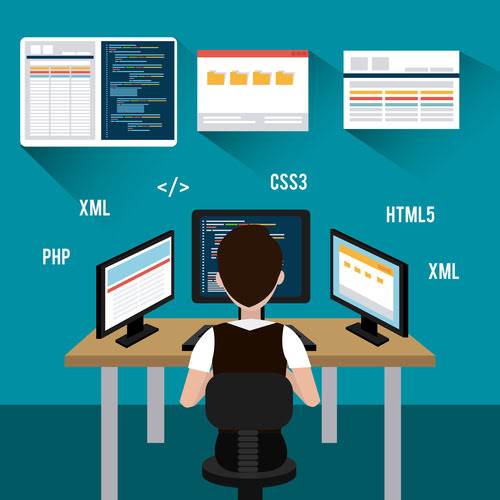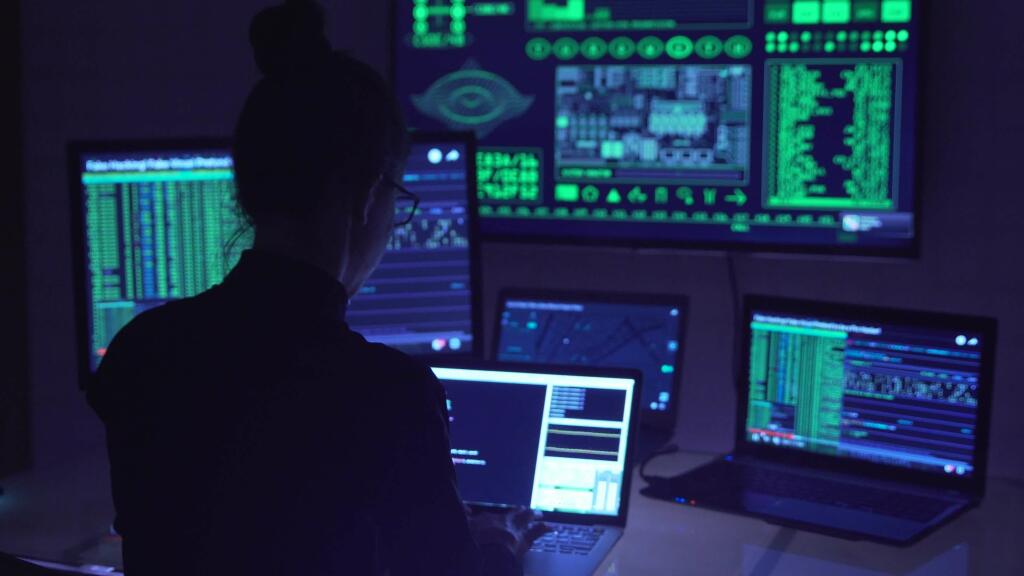Besides these, IT service management, occasion correlation and analysis, performance evaluation, anomaly identification, and causation determination are all potential functions. To higher plan supply routes, lower accidents, and notify authorities in an emergency, related cars with sensors can monitor real-time info regarding visitors jams, street situations, accidents, and extra. Artificial intelligence is improving the manufacturing course of in many ways. Organizations may attain sustainable production ranges by optimizing processes with using AI-powered software. More correctly than humans, AI-powered software program can anticipate the value of commodities, and it additionally improves with time.
The manufacturing trade is at the forefront of digital transformation, leveraging technologies like big data analytics, AI and robotics. The outcomes are tangible, based on McKinsey, who discovered that machine downtime can be decreased by 30% to 50% and quality-related prices can be lowered by 10% to 20%, among other benefits. A lot of conventional optimization strategies have a look at extra common approaches to half optimization.

If you agree by clicking on the Play icon, the video will load and information shall be transmitted to Google as well as information will be accessed and saved by Google on your system. For instance, a car manufacturer may obtain nuts and bolts from two separate suppliers. If one provider by accident delivers a defective batch of nuts and bolts, the automotive producer might need to know which vehicles had been made with those particular nuts and bolts. An AI system might help observe which vehicles were made with defective hardware, making it easier for manufacturers to recall them from the dealerships. In manufacturing, for instance, satisfying clients necessitates meeting their wants in varied methods, including immediate and exact supply. Operators in factories rely on their data and intuition to manually modify tools settings whereas keeping monitor of numerous indications on several screens.
Virtual And Augmented Reality
AI methods can predict whether that ingredient will arrive on time or, if it is running late, how the delay will affect manufacturing. Some manufacturing firms are relying on AI systems to better manage their stock wants. Robotic employees can operate 24/7 with out succumbing to fatigue or illness and have the potential to provide more products than their human counterparts, with probably fewer mistakes.
According to Capgemini’s analysis, more than half of the European manufacturers (51%) are implementing AI solutions, with Japan (30%) and the US (28%) following in second and third. Generative AI is amongst the biggest levers in manufacturing for bettering efficiency and enhancing high quality. Schwarz is currently coaching the AI model for visual inspection on a brand new line. Schwarz manually retrains the mannequin until it recognizes faults just as reliably as it does flawless components. Collaborative robots — also called cobots — incessantly work alongside human employees, functioning as an extra set of hands. Factory employee safety is improved, and office dangers are avoided when abnormalities like poisonous fuel emissions may be detected in real-time.
The Manufacturing AI market forms a dynamic landscape, showcasing quite lots of instruments with distinct targets and functionalities. Some instruments are particularly designed for predictive maintenance, guaranteeing the seamless operation of machinery, whereas others excel in high quality control, enhancing product precision. Certain instruments specialize solely in optimizing manufacturing processes, while a complete set addresses each manufacturing processes and provide chain optimization. To that finish https://www.globalcloudteam.com/ai-in-manufacturing-transforming-the-industry/, Canon uses Assisted Defect Recognition — a combination of machine studying, computer vision and predictive analytics — to supplement human skills. The software program examines manufacturing parts with industrial radiography (X-ray) and pictures to discover out the integrity of every part and its internal construction. With solely a specialized technician, the examination process could be highly handbook and error-prone.
- AI and manufacturing have a natural relationship since industrial manufacturing settings already require folks and machines to work carefully together.
- While it ensures clean knowledge and simplifies AI integration, it could also restrict AI’s capability to study and adapt to distinctive situations.
- Predictive maintenance is undoubtedly one of AI’s most trending and game-changing use cases.
- The prices of managing a warehouse may be lowered, productivity can be increased, and fewer folks will be needed to do the job if quality management and stock are automated.
- AI in manufacturing has many other potential uses and benefits, similar to improved demand forecasting and lowered waste of uncooked materials.
The industrial manufacturing industry is the highest adopter of artificial intelligence, with ninety three p.c of leaders stating their organizations are a minimal of reasonably utilizing AI. 3D printing could also completely remodel housing growth by automating the design and development processes, dramatically decreasing costs and rising entry. “Stators allow us to exploit the potential of generative AI notably nicely,” Beggel says. In total, she and her staff generated some 15,000 synthetic photographs for the plant. For example, a pharmaceutical firm might use an ingredient that has a short shelf life.
What Is Ai’s Influence On The Manufacturing Industry?
Manufacturers sometimes direct cobots to work on duties that require heavy lifting or on factory meeting lines. For example, cobots working in automotive factories can lift heavy car components and maintain them in place while human employees safe them. The costs of managing a warehouse could be lowered, productivity could be increased, and fewer folks shall be needed to do the job if quality management and stock are automated.

RPA software is capable of dealing with high-volume or repetitious tasks, transferring knowledge across techniques, queries, calculations and record upkeep. Manufacturers use AI to analyse sensor data and predict breakdowns and accidents. Synthetic intelligence methods help manufacturing services in figuring out the probability of future failures in operational machinery, allowing for preventative upkeep and repairs to be scheduled in advance. Predictive upkeep enabled by AI allows factories to boost productiveness while reducing repair payments. Many more functions and benefits of AI in manufacturing are potential, including extra correct demand forecasting and fewer material waste. Artificial intelligence (AI) and manufacturing go hand in hand since people and machines must collaborate intently in industrial manufacturing environments.
This method cuts down on the volume of data traffic inside the system, which at scale can turn out to be a significant drag on analytic processing performance. Manufacturing engineers make assumptions when the gear is designed about how the machinery shall be operated. With human analysis, there may be an extra step occurring or a step being skipped. Frequent changes can result in unforeseen house and materials conflicts, which may then create efficiency or issues of safety. But such conflicts can be tracked and measured using sensors, and there might be a function for AI in the optimization of factory layouts.
Artificial Intelligence In Logistics
This reputation is driven by the fact that manufacturing data is an efficient fit for AI/machine learning. Manufacturing is full of analytical information which is easier for machines to investigate. Hundreds of variables influence the production course of and while these are very exhausting to investigate for people, machine studying models can simply predict the impact of particular person variables in such complex conditions. In different industries involving language or emotions, machines are nonetheless operating at beneath human capabilities, slowing down their adoption. AI can take over repetitive duties, liberating up staff to concentrate on extra complicated processes. The techniques optimize processes by analyzing data to establish bottlenecks, detect issues earlier than they occur, guarantee top-notch high quality control, and counsel improvements.
Big factories are just a variety of the ones that may profit from this know-how. Many smaller companies want to grasp how easy it’s to get their hands on high-value, low-cost AI solutions. Since the manufacturing trade is at the forefront of digital transformation, integrating AI turns into more a should have than a nice-to-have. AI functions in manufacturing similar to predictive maintenance, quality control, and clever automation increase effectivity, safety, and decision-making.
It analyzes data to optimize processes, boosting effectivity, decreasing costs, and enhancing high quality with eagle-eyed AI quality control. The platform makes use of cameras, sensor know-how, and AI to automate high quality processes within the conveyor belt. Algorithms and AI analyze the data recorded by these in real-time and ship quick feedback to employees on the manufacturing line by way of smart gadgets. This collaborative approach to automation improves efficiency, flexibility, and ergonomics in manufacturing operations whereas allowing employees to concentrate on extra complex duties that require human intelligence. AI systems allow producers to hold up optimal stock ranges contemplating multiple components like lead time, holding prices, ordering prices, and repair degree necessities. Thanks to real-time monitoring of inventory ranges, order standing, and anticipated delivery instances, manufacturers can steadiness the inventory inventory and enhance stock visibility across the whole supply chain.
Clever Automation
More just lately, Ford integrated AI into their meeting lines by installing robotic arms that seize steel converters and assemble them into place. While performing this task, the AI system learns essentially the most environment friendly way to put the components together. But past these everyday innovations lies a revolution, one that’s reshaping the manufacturing landscape.

Finally, generative AI powered by large language models (LLMs) can assist information availability and collaboration to improve operational productiveness, gear maintenance, and problem decision. For example, Magna International subsidiary Nascote Industries leveraged Vuforia Step Check each for new-hire coaching and to enhance the visible inspection process. The software was even able to establish a “soft connection” that often obtained past inspection engineers however would finally turn into unfastened.AI is initially trained from pictures of a bodily product or present fashions. However, highly effective AIs can then generate their own photographs and fashions simulating totally different situations and conditions. The strategy of synthetic data technology may help to optimize product design.
They will have an increased ability to take care of and restore those products when essential. It incorporates work instructions that information the inspection engineer via a whole visible inspection workflow. The program helps them navigate across the object in area and even troubleshoot common issues if potential. Inspection engineers aren’t the only sorts of workers at present following bodily work instructions and managing their very own documentation.
For occasion, in automobile assembly, robots shield employees from welding and painting fumes, loud stamping press noises, and even accidents. 3D printing—the development of a three-dimensional object from a digital model—on the other hand, is now poised to remodel nearly every trade, from healthcare and manufacturing, to meals, metal, and plastic. In August 2021, for instance, the town of Amsterdam unveiled the primary 3D-printed metal bridge in the world, manufactured from metal and practically forty ft long. “Thanks to generative AI, we will now prepare our models for automated optical inspection at a a lot earlier stage, which makes our quality even higher,” Riemer says. The plant expects that project length shall be six months shorter with the new approach than with conventional methods, resulting in annual productiveness increases within the six-figure euro vary. An airline can use this data to conduct simulations and anticipate points.

See the official virtual opening of BMW Group’s new electrical vehicle plant, opening in Debrecen, Hungary, in 2025. Factories without any human labor are referred to as dark factories since light will not be essential for robots to function. This is a comparatively new concept with only a few experimental 100% dark factories at present operating.
Ai For Manufacturing Corporations In A Nutshell
Predictive maintenance is undoubtedly certainly one of AI’s most trending and game-changing use circumstances. It’s no wonder, contemplating AI-based predictive upkeep can significantly improve the manufacturing process. Likewise, Rolls-Royce, in collaboration with IFS, uses AI in aerospace manufacturing by way of the Blue Data Thread technique. This approach utilizes digital twins and AI for predictive upkeep, leading to a 48% enhance in time before the primary engine elimination. Today, many of the AI within the manufacturing trade is used for measurement, nondestructive testing (NDT), and different processes.

